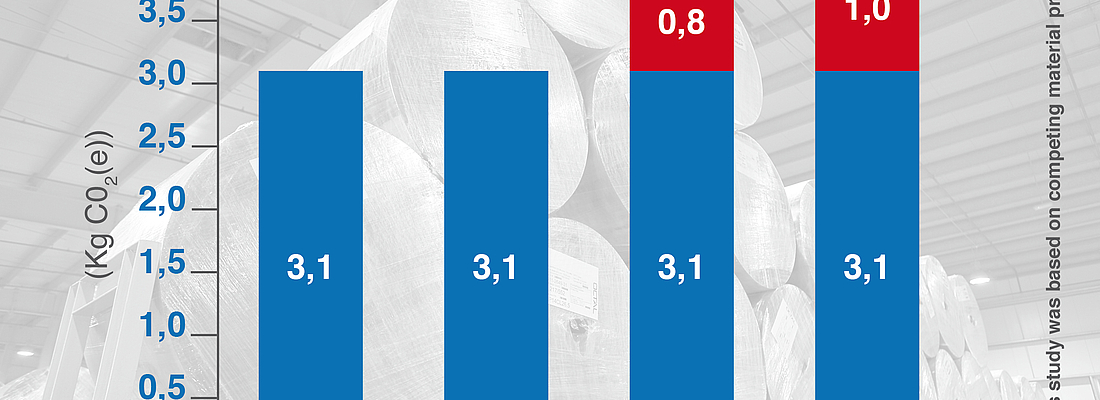The innovative new PET material DPET™ by OCTAL will be presented at Interpack 2011. DPET™ features outstanding product and environmental properties. Joe Barenberg, Chief Operating Officer of OCTAL, emphasized: “With DPET™ we help our customers to reduce their carbon footprint without compromise, and we usher in a new era of environmentally friendly and resource-saving plastics manufacturing.“
DPET™ by OCTAL differs from other rigid PET films mainly by the way it is made. The revolutionary new raw material is produced by applying a completely new technology called Direct-to-Sheet process. The new technology combines the production PET sheet with the manufacture of PET resin in a single process, an industry first yielding dramatic improvements in product quality and environmental performance.

Due to a study from Intertek, DPETTM has the smallest carbon footprint compared to other raw materials.
Photo: OCTAL
67 percent less grid electricity, 20 percent less gas
The unique DPETTM manufacturing process eliminated five energy intensive phases in production and requires considerably less energy than what is needed for conventional PET production. Savings of electricity add up to 67 percent compared with the production of rigid APET film.
By far the smallest carbon footprint
Intertek, a leading specialist for carbon footprint analyses previously known as Pira, has performed a study based the carbon footprint of DPETTM. The result is in favour of the new raw material of OCTAL: According to the study, the carbon footprint of DPETTM (3.1 kg carbon eq.) is 25 percent lower than that of conventionally produced APET film (4.1 kg carbon eq.) and 20 percent lower than “non-zero” rPET (3.9 kg carbon eq.).
Husbanding of water
OCTAL uses water, this valuable resource, as sparingly as possible. For the production process of DPETTM only recycled water is used. A specially built pipeline delivers waste water from the municipal waterworks. OCTAL recycles the water using a reverse osmosis technology and sand filter system. 80 percent of this water can then be used in the manufacturing process. All the wastewater from the process is used to irrigate the greenbelt around the factory.




